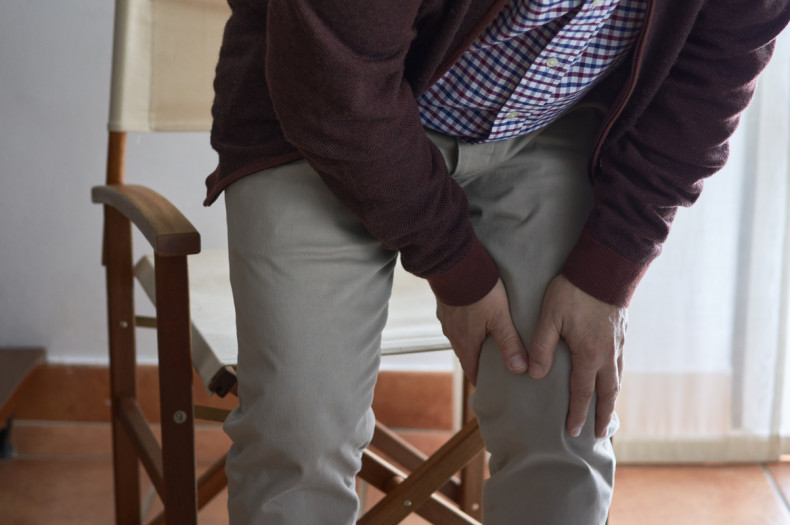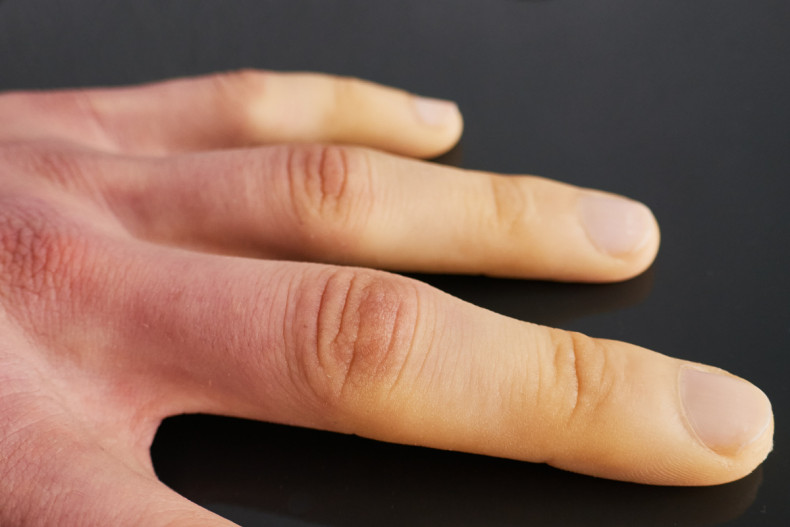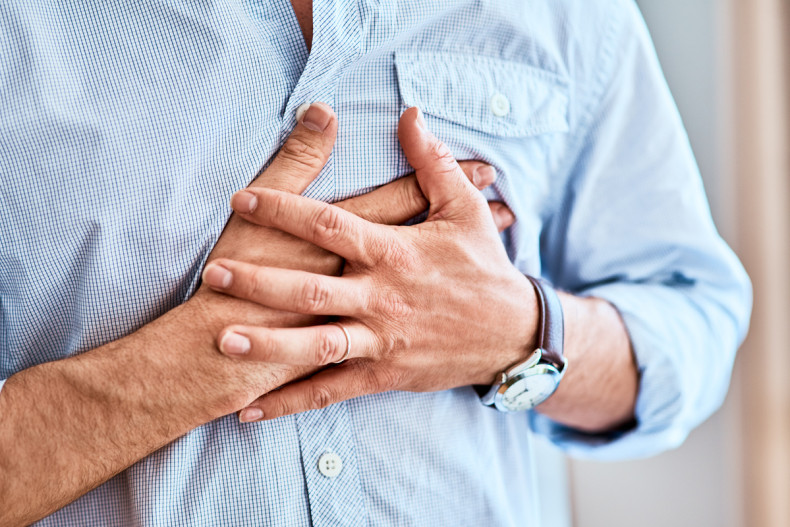Healthy circulation is vital to the effective functioning of your body. If your blood vessels become damaged or diseased, this can restrict blood flow to the body’s tissues and organs, depleting them of oxygen and much-needed nutrients. Dr Margarita Brida, consultant cardiologist, explains what the symptoms of poor circulation are, how you can improve your circulation, and what treatments there are to manage the condition.
What is poor circulation?
Vascular disease, the medical term for diseases of the veins and arteries, most commonly affects the arteries of the heart, brain, and legs. Diseases of the circulatory system are more common than heart disease and cancer, affecting around four million people in the UK and accounting for almost 40 per cent of deaths each year.
“One of the main causes of poor circulation is the hardening and narrowing of arteries due to a build-up of fatty substances called plaques,” explains Dr Margarita Brida. “If a plaque ruptures, it can cause a blood clot. This blood clot can block the blood supply to the heart triggering a heart attack, or it can restrict blood supply to the brain triggering a stroke.”
Meanwhile, narrowing of the arteries in the legs can restrict blood flow to the feet, in a condition known as peripheral arterial disease (PAD). This can make you more prone to injury, infection, and ulceration. Poor circulation can also cause your skin to heal more slowly.
Symptoms of problems with your circulatory system
1. Painful cramps
You may experience painful cramps in your calf muscles during activity, and also possible in your hip and thigh, which improve after rest. The pain typically comes on each time after the same amount of exercise (e.g. walking the same distance at the same pace). This occurs due to a lack of oxygen and nutrients reaching your tissues effectively due to poor flow of blood.

Poor circulation can lead to painful cramps in your calves, hips and thighs.
2. Numbness, weakness and swelling
Lack of blood supply to the extremities can result in feelings of weakness and numbness in these areas. When poor blood circulation interferes with the kidneys, it can lead to abnormal swelling, particularly in the feet.
3. Varicose veins
When the valves in the vein become weakened, blood and pressure builds up causing the veins just below the surface of the skin to twist and swell. They are usually blue or purple in colour and appear near the feet and ankles.
4. Exhaustion and feeling cold
When blood supply is restricted, the body lacks the fuel it needs to maintain optimum energy and temperature levels. This can lead to lethargy and feeling colder than normal. Raynaud’s syndrome is a condition which affects your circulation, leading to your fingers and toes changing colour when you’re cold, anxious or stressed, accompanied by symptoms like pain and numbness.

Raynaud's syndrome affects your circulation, particularly in your fingers and toes
5. Poor cognitive function
The brain relies on blood flow to function properly, so reduced blood flow may result in difficulty concentrating and problems with short and long-term memory. Vascular dementia, which affects around 150,000 people in the UK, occurs due to reduced blood flow to the brain, and typically worsens over time. Symptoms can include problems with concentration, difficulty with planning and slower thoughts.
6. Weak immune system
Poor circulation affects your immune system as the antibodies required to fight off infections are carried in your blood stream. This means that when your blood flow is restricted, you may find that you get ill more often, take longer to recover from illnesses, and any cuts and grazes also don’t heal as quickly.
7. Hair loss and weak nails
Poor circulation of blood can prevent the roots of your hair from receiving adequate nutrients. If this occurs, your hair may become thin, weak and fall out. Similarly, poor circulation can prevent your fingers from receiving sufficient blood flow, with your nail beds starved of oxygen. This can result in brittle nails which break easily.
8. Disrupted bowel movements
When blood flow slows down throughout the body, it can also lead to slower digestive processes. Over time, this can result in disrupted bowel movements including constipation, diarrhoea or abdominal pain.
9. Erectile dysfunction
Men who have poor circulation because of clogged arteries may experience difficulties getting an erection due to insufficient blood flow in the reproductive organs. PAD is actually thought to be the cause of around 70% of cases of erectile dysfunction, and issues with getting an erection often signal greater circulatory issues.
10. Angina
Angina is chest pain caused by restricted blood flow to the heart muscles. If you have poor circulation, your heart muscles won’t receive the oxygen and nutrients they need to function properly. Angina is indicated by a tight, heavy feeling in the chest – often described as cramping – which sometimes radiates across the arms, neck, jaw or back. It is a warning sign that you have an increased risk of a heart attack.

Angina can lead to cramping in the chest, caused by restricted blood flow to the heart muscles
How can you improve poor circulation?
There are a number of lifestyle changes you can make to help improve your circulation, boost your cardiovascular system, and also benefit your immune system.
One of the main changes you can make is to quit smoking. “The chemicals in cigarettes cause your artery walls to become sticky, allowing fatty materials to stick to your artery walls,” explains Dr Margarita Brida. “Over time, this leads to clogged arteries, reducing blood flow throughout your body to your vital organs.” 20 minutes after stopping smoking, your heart and blood pressure will return to normal, highlighting the benefit of quitting. At least 15,000 heart and circulatory diseases occur annually as a result of smoking.
Regular exercise is also known to improve your circulation. Your heart’s ability to pump blood throughout your body is increased, improving blood flow and oxygen supply to your muscles as your heart becomes stronger and healthier. The NHS advises 150 minutes of moderate intensity or 75 minutes of vigorous intensity exercise per week.
Eating a healthy diet has one of the greatest impacts on your circulation and overall vascular health. “Foods containing saturated fats, such as butter, cheese and fatty meats, can increase your cholesterol levels and lead to a build-up of fatty materials in your artery walls,” says Dr Margarita Brida. “Avoiding saturated fats and eating a healthy, balanced diet can prevent this clogging, improving your circulation.”
Linked to both regular exercise and a healthy diet is losing weight, which is another lifestyle change you can implement for improved circulation. Carrying excess weight can result in a build-up of fat in the arteries, again affecting your circulation and preventing enough blood from reaching all your body’s tissues and organs.
A final lifestyle factor which you can work towards changing is reducing stress. “Stress can lead to high blood pressure which, over time, can damage your heart, arteries and major organs. This damage, in turn, can increase your risk of developing heart and circulatory diseases,” says Dr Margarita Brida . “Participating in activities like meditation, exercise or creative hobbies may lower your stress levels.”
What medications and treatments are available for poor circulation?
There are several medications to treat poor circulation, the most common being blood thinners. Blood thinners, such as warfarin, reduce the viscosity of the blood, allowing it to flow more easily and therefore improving circulation.
Aside from blood thinners, other medications given to improve circulation are:
- clot dissolvers – given for serious conditions such as pulmonary embolism
- alpha blockers – a blood pressure medication that prevents tightening of the veins
- calcium channel blockers – to lower blood pressure
- insulin – to prevent complications from diabetes
- statins – reduces blood cholesterol levels and protects insides of the arties, lowering mortality in people with PAD
- supplements – e.g. vitamin E, antioxidants and multi-minerals.
Apart from being prescribed medications, people with poor circulation may also be recommended to wear compression socks. This can help with swollen or painful legs which occur as a result of poor circulation.
What interventional/surgical options are there for poor circulation?
If the above medications are not suitable or sufficient for improving your circulation, we also have more invasive options available to treat the condition. If you have tried medications to treat poor circulation but you still require further treatment, your doctor may recommend a surgery. These include:
- angioplasty – this method uses a balloon to open up and stretch blocked arteries, allowing the blood to flow more easily through the arteries
- blood clot removal – also known as a thrombectomy, a minimally invasive method which inserts a catheter through a small incision, guided by X-ray, to remove a blood clot
- vena cava filter – this type of treatment is used to stop blood clots from reaching the lungs, which can be a life-threatening condition.
For more information or to book an appointment, please contact our customer care team.
Related content
-
Angina
Angina is chest pain that typically comes on during exertion or at times of stress.
-
Cardiology
Our specialists are continuously innovating in minimally invasive cardiology procedures and improving care delivery.
-
Coronary angioplasty
Coronary angioplasty is a procedure that improves blood flow to your heart.
-
Poor circulation
Poor circulation is a reduction of blood flow around the body, when the circulatory system is unable to pump blood around the body effectively.
